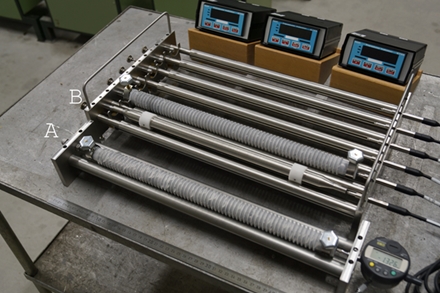Autogenous shrinkage
In high-performance concrete, the low water-to-cement ratio and the addition of silica fume cause a significant drop in the internal relative humidity (RH) in the cement paste during sealed hydration. Closely related to this autogenous RH change (also called self-desiccation), the cement paste undergoes autogenous shrinkage. In concrete, autogenous shrinkage results in tensile stresses in the cement paste due to restraint from the aggregates. Autogenous shrinkage should be limited because it may induce microcracking or macrocracking and ultimately impair the concrete quality.
Summary
In the reaction of cement with water, a part of the water becomes chemically bound in the hydration products. This reaction results in chemical shrinkage, caused by the fact that both chemically and physically bound water have smaller specific volumes than free water. If no extra water is available for cement hydration, all pore water is progressively consumed. This process empties the pores in the concrete and produces a drop of the internal RH (self-desiccation). Emptying of the pores and self-desiccation leads to capillary stresses in the pore water, which induce an external volume contraction, called autogenous shrinkage. Contrary to drying shrinkage, autogenous shrinkage occurs without any loss of moisture from the concrete. Autogenous shrinkage becomes important with w/c lower than about 0.40-0.45 and increases with the decrease of w/c.
Internal curing is an efficient method for reducing autogenous shrinkage. Saturated lightweight aggregate or superabsorbent polymers can be added to concrete to keep the capillary pores filled with water. This reduces the capillary underpressure in the pores and the autogenous shrinkage of the concrete.
M. Wyrzykowski, S-I Igarashi, P. Lura, V. Mechtcherine (2018). Recommendation of RILEM TC 260-RSC: using superabsorbent polymers (SAP) to mitigate autogenous shrinkage. Materials and Structures 51(5): 135

PhD Thesis of Zhangli Hu at EPF Lausanne
In her thesis, Dr. Zhangli Hu developed analytical and numerical methods to predict autogenous deformation of cementitious materials with low water-to-binder ratio, in particular (but not only) containing fly-ash.
Her work includes an extensive study of creep of early-age cement pastes and of the impact of creep on autogenous shrinkage. These results, based on a clever combination of well-designed experiments and a sound poromechanics approach, provide the final answer to a long debate and convincingly show that autogenous deformation can only be explained when the time-dependent, viscoelastic response of the cementitious materials to capillary pressure is taken into account.
Another important issue addressed in this thesis is the state of water in self-desiccating cementitious materials. Ms Hu developed an original method, based on a combination of experimental results from 1H NMR and MIP, to predict the internal relative humidity of cement-based materials. At the same time, this method confirms the goodness of the hypothesis that considers capillary pressure as the driving force of autogenous shrinkage and opens the way for predicting autogenous shrinkage solely based on the degree of hydration and the developing microstructure. This part of the thesis was published also in Cement and Concrete Research:


